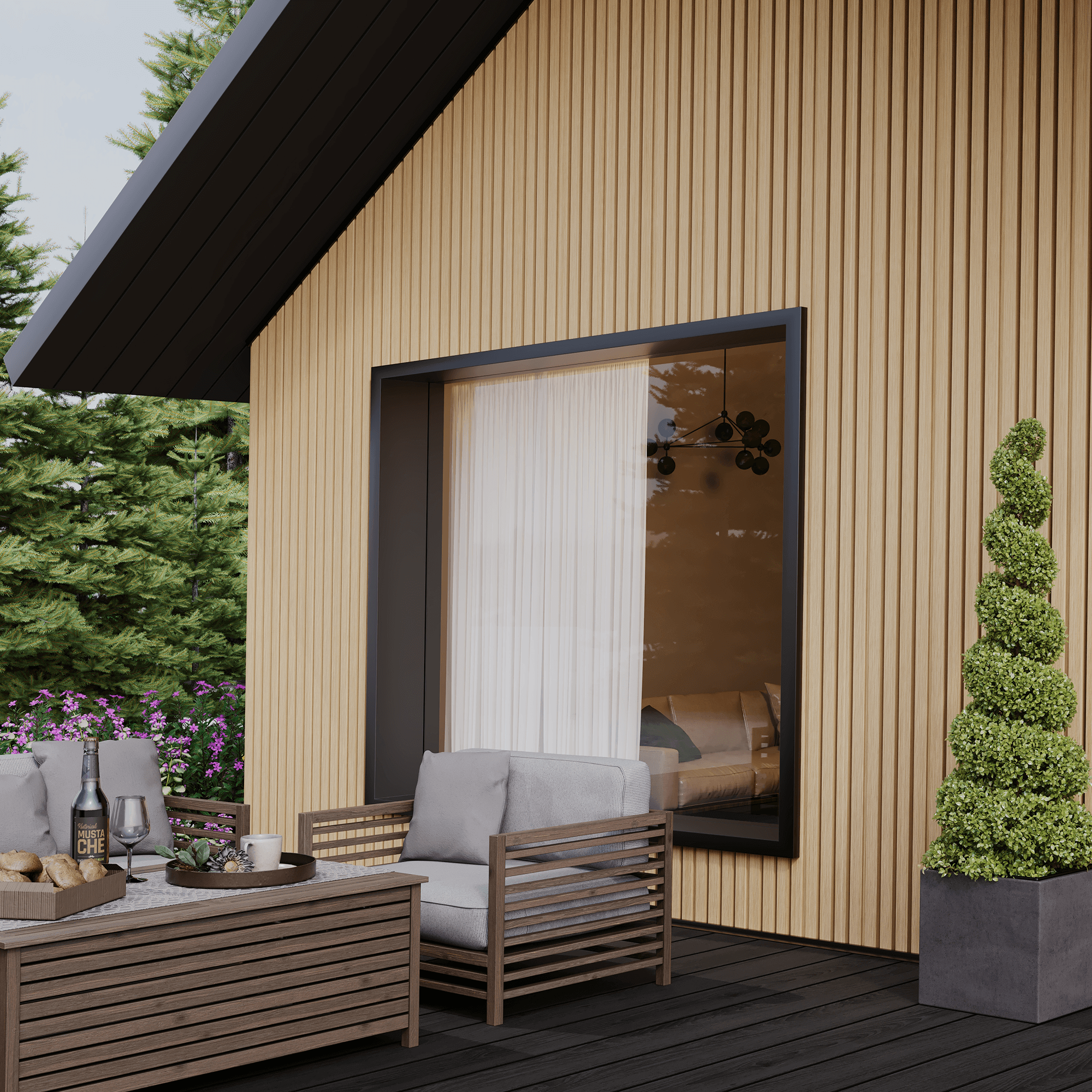
Do You Need Planning Permission for Cladding?
If you’re considering installing cladding on your home or in the garden, you’ve probably asked the question, ‘Do you need
Products in Stock
Lowest Prices
Express Delivery
10-Year Warranty
December Sale. Up To 15% Off.

When it comes to decking, the question often arises: “What’s the buzz about composite decking?” or “Why choose composite over timber?” In truth, there are lots of benefits of composite decking over other forms such as wood, but there are also several drawbacks to keep in mind as well. In this article, let’s address these queries head-on by exploring the advantages and disadvantages of composite decking.
Composite decking has a variety of pros and cons, so it’s important to consider what matters to you when choosing decking material. If you want something that is low maintenance and will last for 20-40 years, composite decking might be the best choice. However, if you’re someone who likes to follow the latest trends, composite might not be the best option as it can’t be repainted and is costly to replace.
We’ve collated a useful table detailing the variety of advantages and disadvantages composite decking offers, and we’ve gone into more detail about each further down.
| Pros | Cons |
|---|---|
| Durability | More expensive |
| Low maintenance | Doesn’t add property value |
| Aesthetic | Colours are permanent |
| Eco-friendly | Can fade over time |
| Extra-safe: slip-resistant | Lacks the look of real wood |
Without further ado, what are the advantages of composite decking?
Composite decking is engineered for maximum durability, and unlike traditional timber decking, is designed to withstand the most extreme weather conditions. By blending the strength of plastic with the aesthetics of wood, composite boards are denser and sturdier, capable of withstanding various weather conditions without cracking, splitting, or warping. Moreover, their smooth surface ensures safety for bare feet and pets, while their weather-resistant construction shields them from rain or snow.
In addition, composite boards are pest-resistant, so won’t attract the sorts of insects that damage traditional wood decking.
One of the standout features of composite decking is its minimal maintenance requirements. Unlike timber decks that necessitate regular sanding, sealing, and staining, composite decking retains its allure with minimal upkeep. A simple wash with soapy water now and then suffices to remove dirt and mold, making it a hassle-free option for both professionals and DIY enthusiasts.
You can also go the extra mile and invest in some cleaner for your decking, such as our environmentally-friendly composite decking cleaner. Be wary though: only buy cleaner from a trusted supplier, as certain chemicals can damage your decking long-term.
For more information read our composite decking maintenance guide.
Due to the range of colours available, composite decking boards offer the timeless beauty of timber in a more durable and practical form. Enhanced with authentic wood grain patterns, they elevate any outdoor space. The hidden fastener system of Dino’s decking boards ensures a sleek, uniform finish, while the reversible design provides versatility with attractive wood grain on one side and textured ridges on the other. With 11 colours to choose from, composite decking allows for endless design possibilities to achieve an elegant, modern finish.
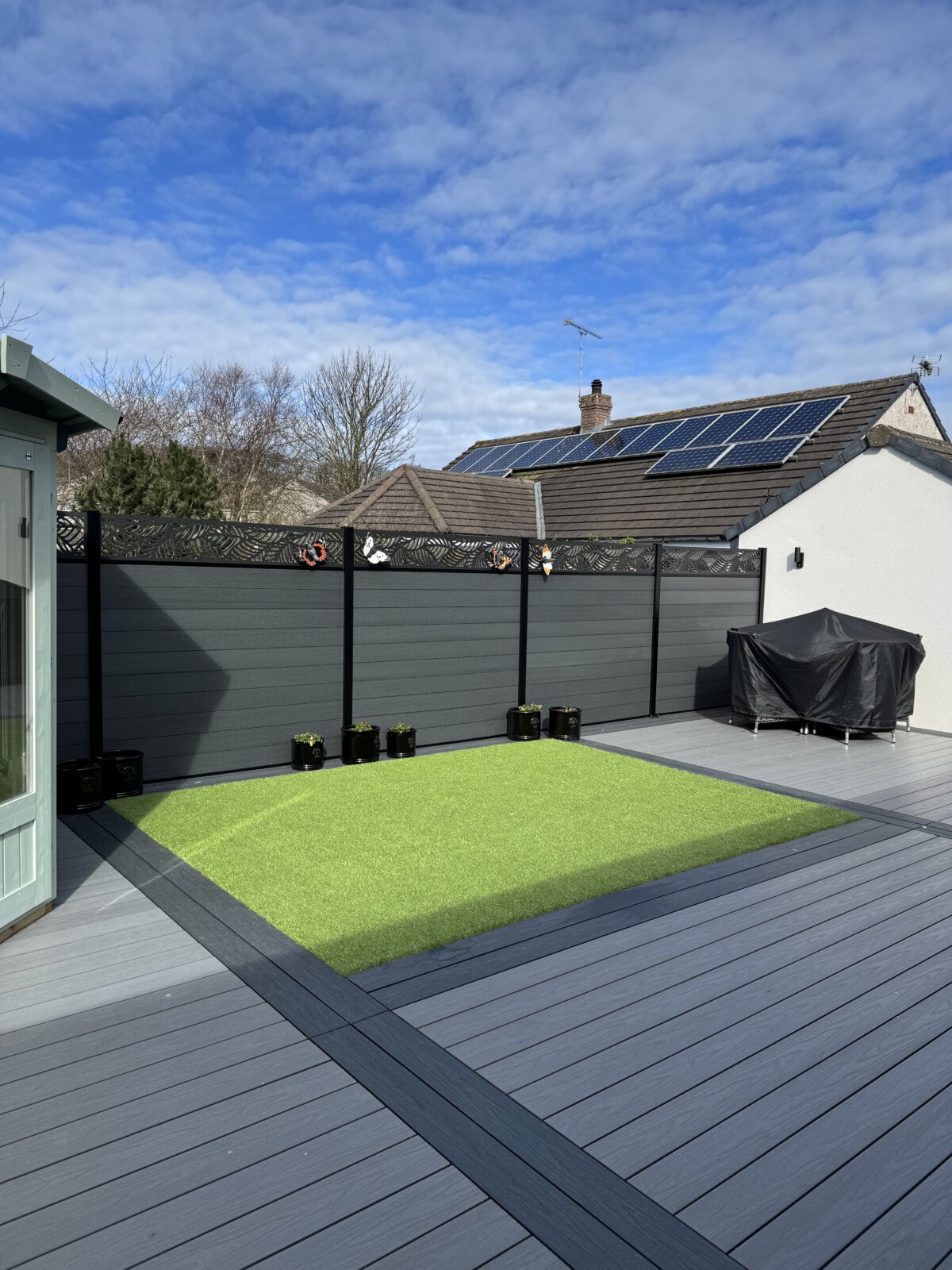
Opting for this type of decking signifies a commitment to environmental responsibility. Our boards are made from a blend of recycled wood and plastic, approximately 55% recycled wood and 40% recycled plastic, reducing the need for fresh timber and preventing plastic waste from ending up in landfills. By repurposing materials and conserving natural resources, composite decking offers an eco-friendly alternative to traditional timber, minimising the environmental impact of decking projects.
While the initial cost of composite decking may be slightly higher than timber, it pays off in the long run. Thanks to its strength and durability, composite boards boast a longer lifespan, resulting in lower maintenance costs over time. With minimal upkeep requirements and reduced need for replacements, composite decking offers an improved return on investment, making it a smart long-term choice for any deck project.
In essence, composite decking combines durability, low maintenance, aesthetics, sustainability, and long-term value, making it a superior choice for decking needs.
Due to the time and material needed to make composite decking, it is typically more costly than its wooden counterparts. In addition, manufacturers and suppliers typically have increased overheads due to the complexity of acquiring and turning this material into a finished product.
However, don’t let that put you off. Composite decking more than makes up for its higher cost with the long-term benefits it provides such as longevity, resistance to rot, mould and pests and its incredible aesthetics.
Purchasing composite decking takes a lot of planning and the colour you purchase must be something you are completely happy with, as composite decking can’t be repainted. If you are someone who loves to try the latest garden trends, maybe composite decking isn’t for you.
However, our range of decking comes in a variety of timeless colours such as our grey composite decking and premium white decking, meaning they’ll never go out of fashion.
We don’t recommend trying to alter the colour of your composite decking either, as this can involve using harsh chemicals and could invalidate your warranty.
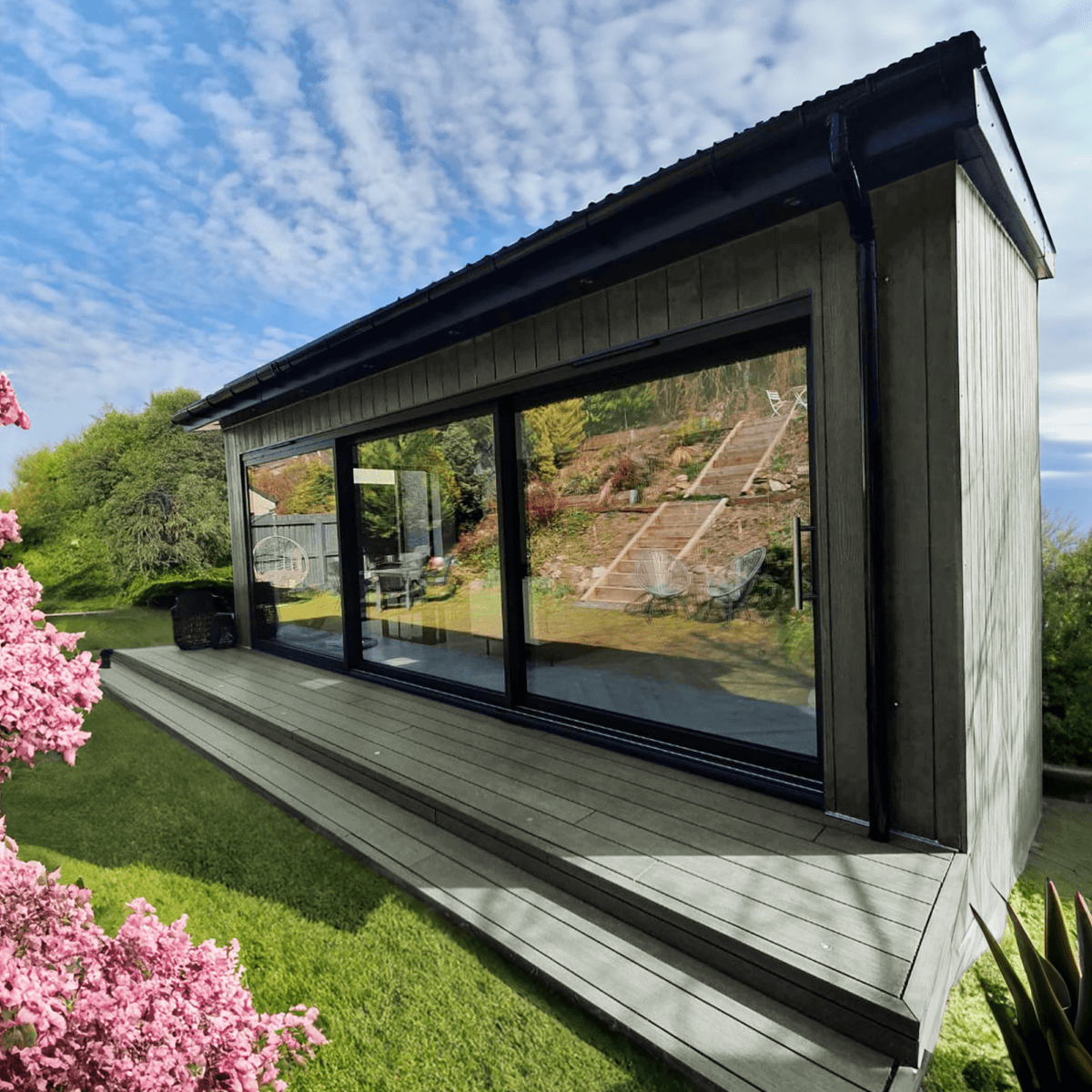
One misconception about composite decking is that it adds value to your property, and it’s correct. Composite material itself won’t add value, but decking will as it technically provides more living space. As a result, it doesn’t matter if your decking is made out of wood or composite, the value it adds to your property won’t change.
This means that it’s all down to personal preference, whether you want to spend time maintaining wood decking or spending more time relaxing on your composite deck.
Some darker composite decking colours can fade over time due to regular sun exposure, especially on very hot days. This is completely normal and is expected when something is exposed to the sun regularly. Other factors that can contribute to fading include heavy use, weathering or certain things being spilt onto the deck such as chemicals. Our composite decking undergoes a transformation during the first six months, losing 30% of its colour before stabilising to its final one.
A possible solution on very hot days, depending on the location of your decking, is to cover it with an umbrella or small marquee to prevent sun damage. This is also perfect for keeping you cool too.
Fading can be partially prevented if action is taken early, however some fading is bound to happen. Use the following methods to prevent future fading:
Some people prefer the look, feel and scent of real wood, and there are benefits of choosing it as your decking material. Some composite decking options look too artificial and are poorly designed, making the entire deck look plastic. However, our decking is designed to mimic real wood as close as possible, ensuring your decking has a subtle, natural look.
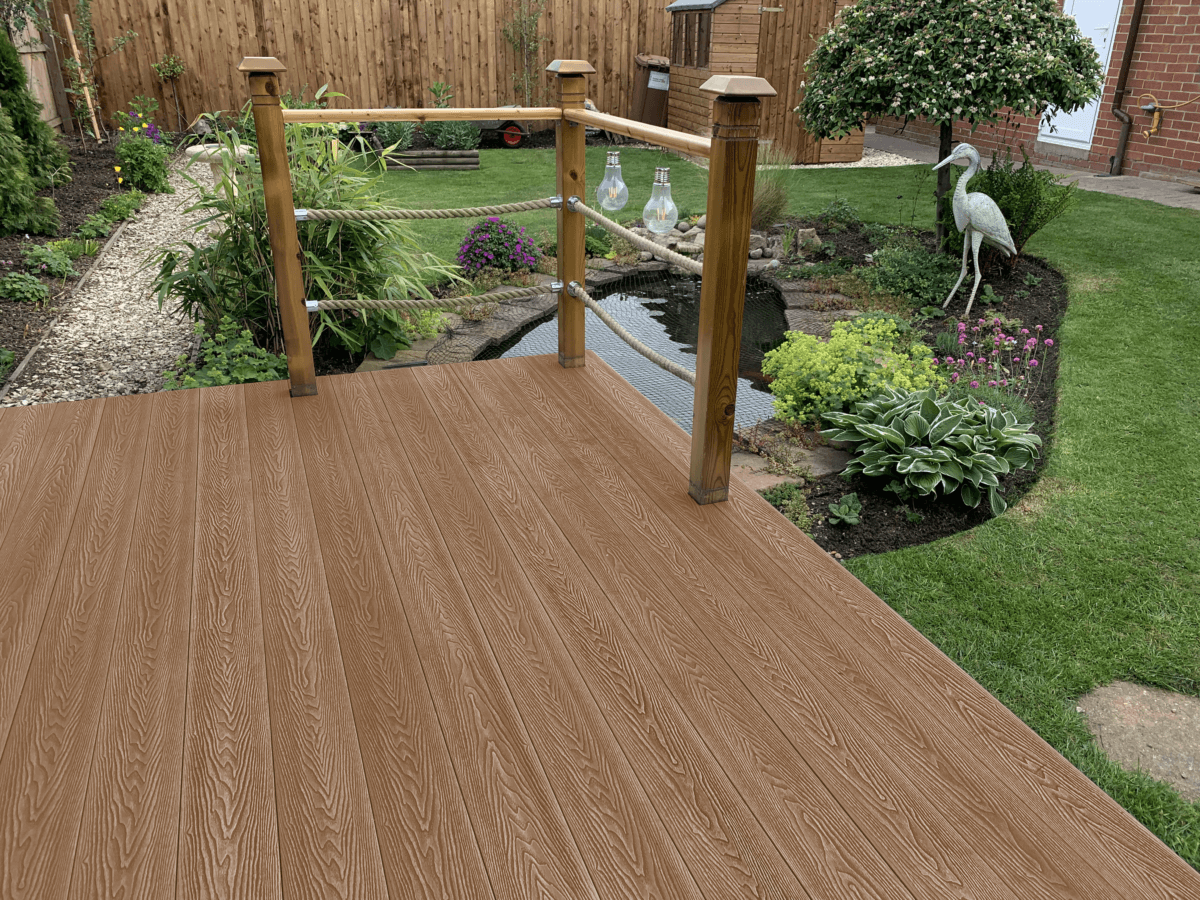
Composite decking has a variety of pros and cons, but is it right for your garden? To work this out, you must first determine what you want from your garden project.
Do you want your decking to act as a suitable dining area, or do you want to use it to relax on warm summer days?
Either way, you’ll need an option that can resist the elements and the side effects they can cause, such as mould. At Dino Decking, our boards are available in 4m lengths with a total of 11 colours to choose from. Check out our range of composite decking today.
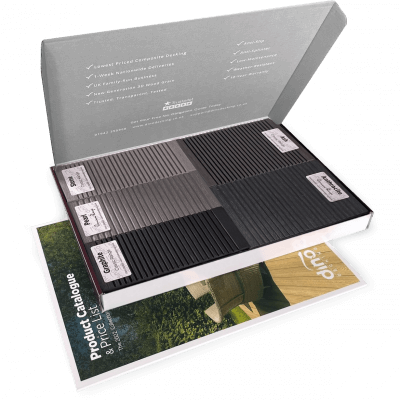
Our sample pack contains a sample piece of each colour currently available. Order your free sample pack today to compare the colours and get a true feeling of the Dino Decking range!

If you’re considering installing cladding on your home or in the garden, you’ve probably asked the question, ‘Do you need
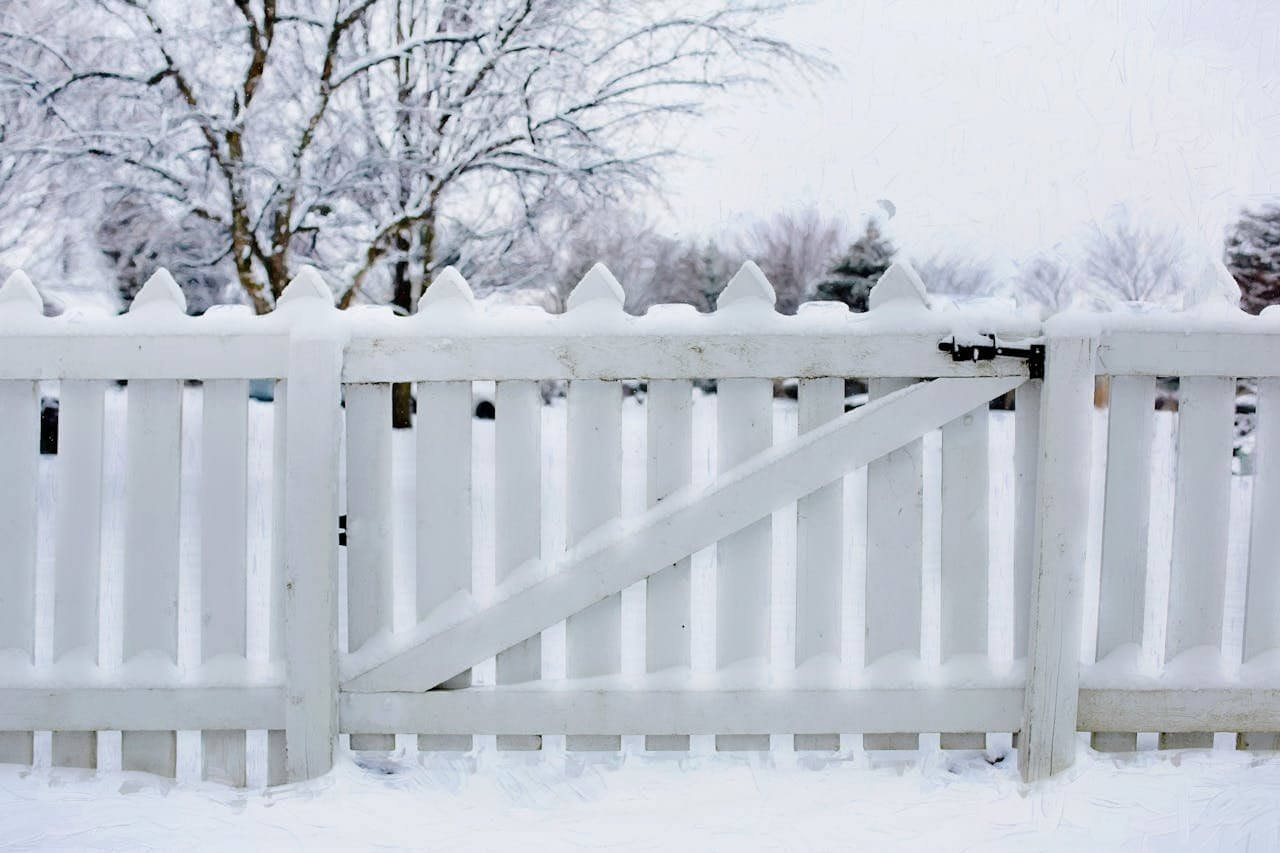
If you’re looking to go all out this festive season, you might be looking for some fantastic Christmas garden ideas